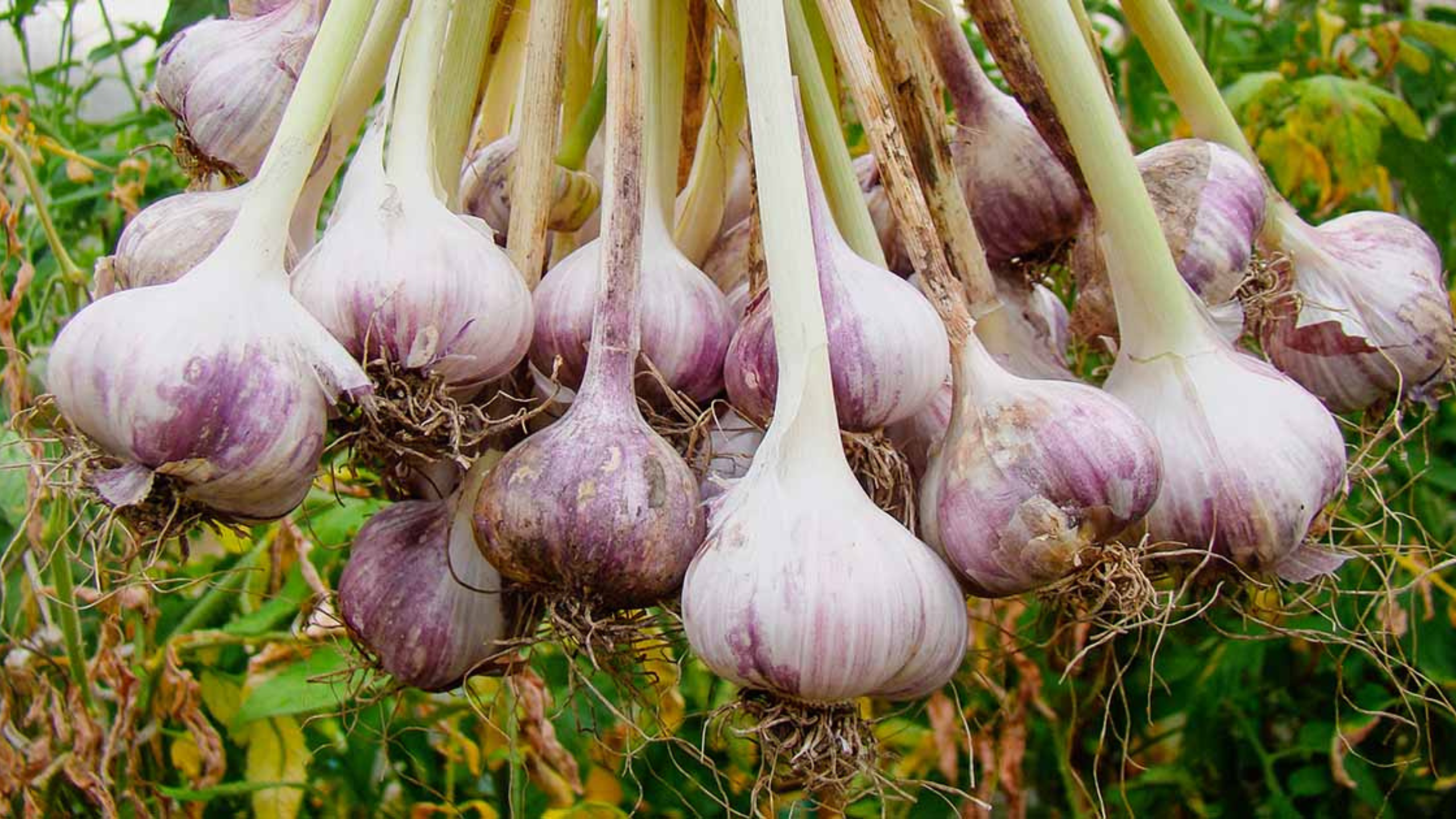Garlic is one of the most beloved ingredients in cooking, offering robust flavor and numerous health benefits. Growing it at home not only provides you with fresh, flavorful garlic but also gives you control over its quality and an endless supply—all without regular trips to the store! Whether you have a backyard garden or just a small balcony, cultivating garlic is a manageable task that can yield substantial rewards.
Why Grow Garlic at Home?
Here are some compelling reasons to consider:
- Cost Savings: Growing your own garlic can significantly cut down your grocery bills while ensuring you have a steady supply on hand.
- Easy to Grow: Garlic requires minimal maintenance and adapts to various soil types and climates, making it accessible for gardeners of all skill levels.
- Superior Quality: Homegrown garlic is often more flavorful and healthier, as it is free from pesticides and other chemicals found in commercial produce.
- Versatile Usage: Not only can you harvest the bulbs, but you can also use the green shoots in your recipes, adding a fresh garlic flavor to any dish.
What You Will Need
1. Choosing the Right Garlic Bulbs
- Opt for Organic Garlic: Select organic garlic as non-organic varieties are often treated to prevent germination.
- Look for Healthy Bulbs: Choose bulbs that are firm and plump, free from mold or soft spots.
- Local Over Imported: Avoid garlic imported from distant countries, as it may not thrive in your local climate.
2. Necessary Materials
- Soil Preparation: Ensure you use well-draining soil rich in organic matter, slightly sandy to prevent excess moisture retention.
- Containers (if growing indoors or on a balcony): Use pots with drainage holes to avoid water buildup.
- Sunny Spot: Garlic requires at least 6 hours of direct sunlight daily, so select an appropriate location for planting.
Step-by-Step Guide to Growing Garlic
1. Select the Right Variety
There are two main types of garlic:
- Softneck Garlic: Ideal for mild climates, this variety keeps well and produces more cloves per bulb.
- Hardneck Garlic: Best suited for colder climates, these bulbs have a more intense flavor and produce edible flower stalks called “scapes.”
2. Prepare the Soil
A well-prepared soil is key to healthy garlic plants:
- Loosen the Soil: Work the soil to a depth of at least 15 cm to promote good root development.
- Add Nutrients: Incorporate compost or well-rotted manure to enrich the soil with essential nutrients.
- Ensure Drainage: Garlic hates standing water, as it can cause bulb rot. Make sure your soil drains well.
- Check Soil pH: Aim for a soil pH between 6 and 7, which is optimal for garlic growth.
3. Planting Garlic Cloves
- Separate the Cloves: Carefully break apart the garlic bulb, keeping the protective skins on each clove.
- Plant Depth: Insert each clove 5 cm deep with the pointed side facing up.
- Spacing: Maintain a distance of 10 to 15 cm between cloves, with about 30 cm between rows.
- Cover and Compact: Lightly cover them with soil and press down gently to eliminate air pockets.
4. When to Plant?
- Autumn Planting: In warmer areas, plant garlic from September to November.
- Spring Planting: In colder climates, aim to plant in early spring (February to March).
5. Caring for Your Garlic
- Watering: Water moderately, particularly during the initial growth phases, but don’t overwater. Typically, once a week is sufficient.
- Mulching: Apply a layer of straw, dry leaves, or grass clippings to retain moisture and suppress weeds.
- Weeding: Keep an eye on competing weeds that may steal nutrients from your garlic.
- Pest and Disease Monitoring: While garlic is generally resistant, watch for pests like onion flies and issues caused by excess moisture.
6. Harvesting Garlic at the Right Time
How Long Does Garlic Take to Mature?
Garlic typically takes about 7 to 9 months to mature. Harvest is usually done in June or July for autumn-planted garlic.
Signs that Garlic is Ready to Harvest:
- The leaves will start to yellow and dry out.
- Bulbs become firm and well-formed.
- Check a bulb by carefully digging around it; if it’s well-developed, it’s time to harvest.


bauuas
878051 768311I come across your webpage from cuil and it is high quality. Thnkx for giving this sort of an incredible article.. 375438
https://t.me/s/Top_BestCasino/173
https://t.me/s/dragon_money_mani/23